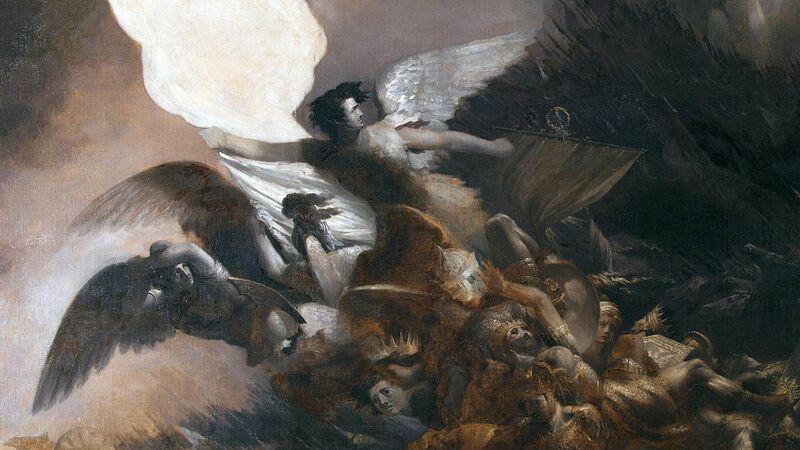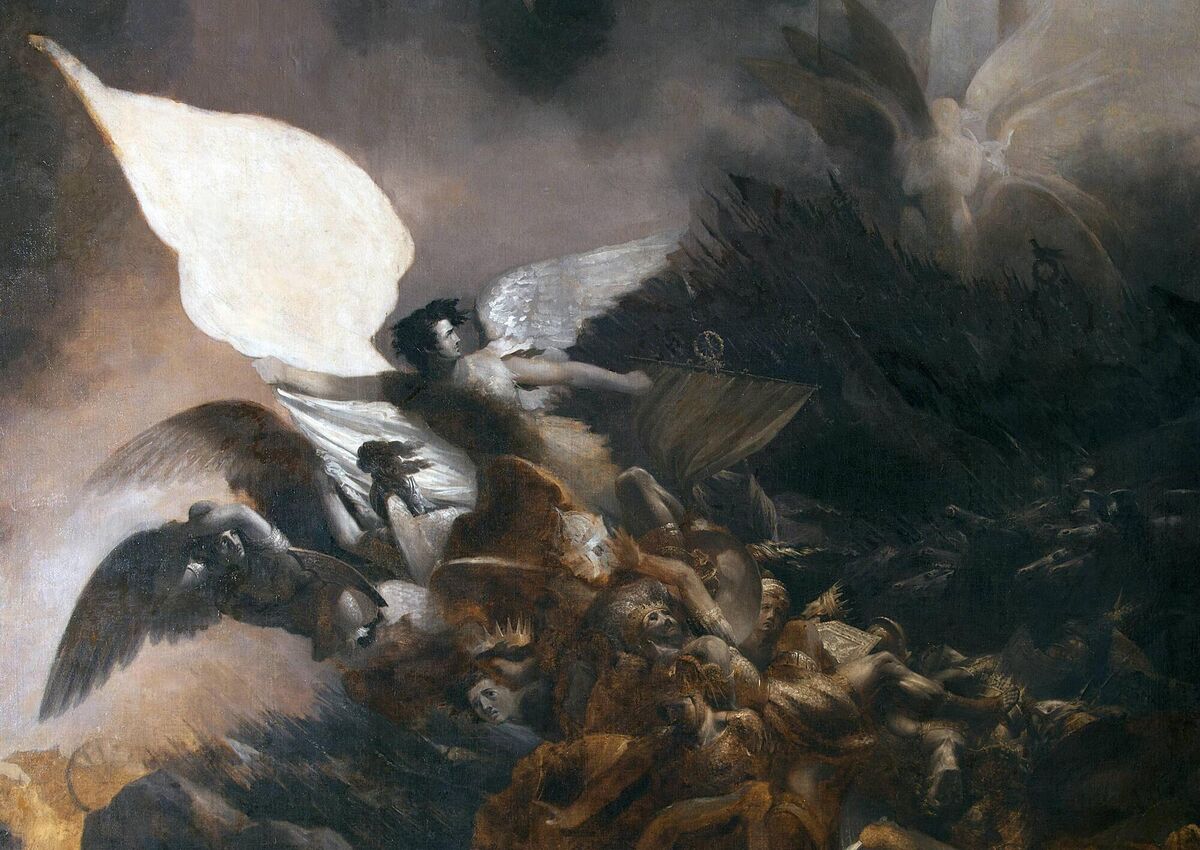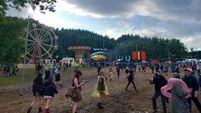Munster in 30 Artworks, No 18: Samuel Forde, Fall of the Rebel Angels

A detail from Samuel Forde's Fall of the Rebel Angels. Picture: Courtesy of Crawford Art Gallery
It seems only appropriate that Samuel Forde’s great painting Fall of the Rebel Angels remains unfinished. After all, the artist known in his native Cork as ‘the young Raphael’ had his life cut short by tuberculosis, dying aged 23 in 1828, and it would have been disrespectful for anybody else to complete his masterpiece.
Fall of the Rebel Angels has been in the collection of the Crawford Art Gallery for over a century, but little was known about its creator until the curators Michael Waldron and Shane Lordan began researching his career in earnest around 2012.
“Forde was born in 1805,” says Waldron, Assistant Curator of Collections and Special Projects at the Crawford. “His father was a tradesman who abandoned the family to move to America. There were two sons and a daughter. Forde’s older brother William was a successful musician, and supported the family thereafter.”
Forde excelled at school, becoming fluent in Latin, Greek and French, and displaying a natural talent for drawing. With William’s support, he enrolled at the Cork Academy to study art, around the time the Canova Casts were acquired for the institution by Lord Listowel.
“He was among the first intake of students at the school,” says Waldron. “His contemporaries included John Hogan and Daniel Maclise, who he’d first met when they were nine years old, playing marbles on the Grand Parade.”

Forde was recognised as an exceptional talent among his peers. His principal, J Chambers, taught him the distemper technique for painting theatre sets, and he soon found freelance employment as a set designer at Cork Theatre, which stood on the site of the current GPO on Oliver Plunkett St, and as a decorative painter in private houses.
“It was around this time that Hogan went to Rome to train as a sculptor, while Maclise went to London. All three would have studied and been familiar with the work of the Cork artist, James Barry, who had become a very prominent figure in England. They were all highly ambitious, and it was almost inevitable that Forde would have gone abroad as well, most likely to London, if he had lived a little longer.”
As it happened, a subscription was raised to send him to London to train in the mezzotinto engraving technique, but he was discovered to be a year too old to qualify for the apprenticeship. Instead, aged twenty, he took up employment as the first Drawing Master at the Cork Mechanics’ Institute when it opened in the same premises as the School of Art.
In his spare time, Forde began painting ambitious canvases. These included Vision of Tragedy, based on the writings of John Milton, the preliminary cartoon for which is now in the Victoria and Albert Museum in London.
In November 1827, he created three large paintings – of the Crucifixion, the Virgin Mary and St Patrick - for the new cathedral at Skibbereen.
“In his diary, Forde says he completed the project in two days, but it’s more likely that he had done most of the preliminary work at his studio in Cork, and what he’s describing is how he finished painting the canvases on site in Skibbereen. The three paintings were later moved to St Barrahane’s Church in Castlehaven, where they can still be seen today.”
Forde began painting Fall of the Rebel Angels in early 1828. He was already suffering from tuberculosis, and worked at it over several months, often by candlelight into the small hours of the night.
“He must have known his time was limited. He gave up teaching to concentrate on the painting. William Edward Penrose was a successful businessman in Cork, and a patron of the arts, and he paid Forde 30 guineas for Rebel Angels so he could continue working on it.”
At 295 x 235cm, the painting is epic in scale, and blends the two popular styles of the day, Neoclassicism and Romanticism, in its description of the War in Heaven. In the top right corner, Forde depicts heaven as a classical ideal, while the tangle of bodies below represents the chaos of hell. The most striking figure in the painting is Lucifer, who, with his tousled hair, looks almost heroic.

“It’s quite possible that he based Lucifer on an image of the poet Lord Byron, who was notorious for being mad, bad and dangerous to know.”
Forde died at his lodgings in Sunday’s Well on July 29, 1828, and was buried on the grounds of St Fin Barre’s Cathedral in Cork.
“Unfortunately, it’s not possible to identify his grave," says Waldron. "It was covered over when work began on the new cathedral in the 1860s.”
Even in its unfinished state, Fall of the Rebel Angels was considered a masterpiece. It was exhibited at the Royal Hibernian Academy in 1830 and the Cork Exhibition in 1852. Later, Penrose bequeathed it to his nephew, the horticulturist William Edward Gumbleton, who in turn passed it on to the Crawford Collection. At one stage, the canvas went missing, or was at least forgotten about, until it was re-discovered in 1997.
“It seems to have been cut out of its frame to save space, and was folded away in a store room. We were very lucky it turned up when it did, or it might have been dumped. As it was, it took two years to restore.”
Few of Forde’s paintings survive. Apart from the triptych in Skibbereen, the Crawford has Fall of the Rebel Angels and a small self-portrait. The Crawford does also have a substantial collection of his drawings, however, many of which were included in the gallery’s exhibition, Samuel Forde: Visions of Tragedy, in 2014. The fully illustrated catalogue produced to complement the exhibition remains the only book ever dedicated to Forde’s oeuvre.
“Fall of the Rebel Angels can always be seen in the Sculpture Gallery,” says Waldron, “along with the Canova Casts, which Forde would have drawn from as a student, and taught with as an instructor. We’ll also be including a number of Forde’s drawings in the exhibition Drawing Room this September, along with work by contemporary artists such as Megan Eustace and Kathy Prendergast. We’re still finding new bits of information about him, and who knows but that more of his work might turn up in the future.”
- Further information:







